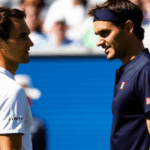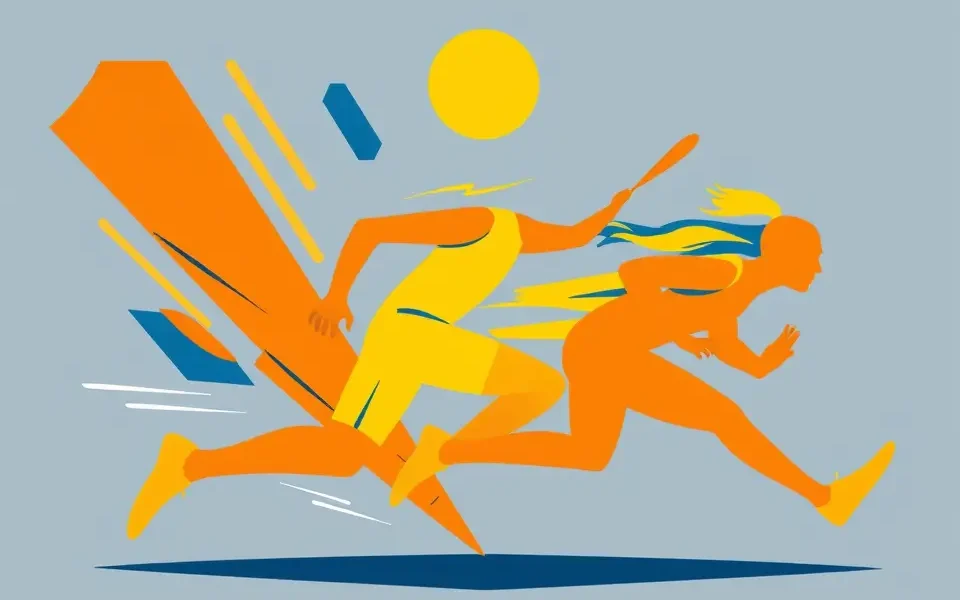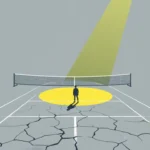Jannik Sinner, the world’s No. 1 ranked tennis player, is preparing for his return to the court at the Internazionali BNL d’Italia in Rome. After a period away from competition, due to a three-month suspension for anti-doping, analysts are weighing in on how Sinner’s game might translate to the clay court season.
The Roddick Prediction: Adapting the Game
According to Andy Roddick, while Sinner has dominated on hard courts, he may need to adjust his strategy on clay. Roddick suggests that Sinner won’t be able to simply overpower opponents on clay in the same way he does on faster surfaces. He elaborated, “He’s not going to be able to blow people off the court like we’ve seen on the other courts, and he doesn’t get as much work on his serve…He’s going to have to set the table in different ways on clay.”
Sinner’s Playing Style: An Overview
To understand this prediction, it’s important to analyze Sinner’s playing style. Generally, he is known as an aggressive baseliner with a powerful game. Here’s a breakdown of his key attributes:
- Aggressive Baseline Play: Sinner dictates play from the baseline, taking the initiative in rallies.
- Powerful Groundstrokes: Both his forehand and backhand are significant weapons, capable of generating high levels of topspin and pace. His backhand, in particular, is considered one of the heaviest on tour.
- Movement and Agility: Sinner’s slim build and exceptional movement allow him to cover the court effectively, transitioning from defense to offense seamlessly.
- Serving: He possesses a strong serve that can reach high speeds, complemented by a strategic second serve.
- Tactical Acumen: Sinner is known for his ability to read the game and anticipate his opponent’s moves.
Clay Court Challenges: Why the Adjustment?
Clay courts present unique challenges compared to hard courts, which may require Sinner to adapt his game:
- Slower Surface: Clay courts slow down the ball, reducing the effectiveness of outright power and big serves. This gives opponents more time to react and forces players to construct points more carefully.
- Higher Bounce: The higher bounce on clay can neutralize Sinner’s flat, penetrating shots, making it harder to hit through opponents.
- Increased Emphasis on Movement: Clay court tennis demands exceptional footwork and court coverage, as players need to slide and adjust to the unpredictable bounces.
- Longer Rallies: Clay courts tend to produce longer rallies, requiring players to have greater stamina and mental fortitude.
Setting the Table: Alternative Strategies for Clay
If Sinner can’t solely rely on overpowering his opponents, what adjustments can he make to succeed on clay? Roddick suggests he’ll have to “set the table in different ways.” This could involve:
- Enhanced Point Construction: Sinner may need to focus on building points patiently, using angles, depth, and variety to create openings.
- Strategic Use of Topspin: Maximizing topspin will be crucial for dictating the height and trajectory of the ball, pushing opponents off balance, and creating opportunities to attack.
- Improved Court Coverage: Sinner will need to utilize his agility and footwork to cover the court effectively, defend against opponent’s attacks, and create opportunities to transition from defense to offense.
- Serve Placement and Variation: While a big serve might be less effective on clay, Sinner can focus on serve placement and variation to disrupt his opponent’s rhythm and set up favorable rally positions.
Sinner on Clay: A History
While Sinner has achieved his greatest successes on hard courts, he is no stranger to clay. In 2024, he reached the semifinals of the French Open, demonstrating his potential on the surface. However, his career win-loss record on clay (90-48, approximately 65.22%) is lower than on other surfaces, indicating room for improvement.
The Comeback in Rome: High Expectations
Sinner’s return to action in Rome is highly anticipated, especially since he missed the event last year due to a hip injury. Playing in his home country, he will undoubtedly receive strong support from the crowd. Coco Vandeweghe noted that Rome is the best place for Sinner’s comeback, anticipating “positive vibes” that could help him overcome any negative connotations related to his suspension.
Sinner’s Suspension and Return
The 23-year-old Italian faced a three-month suspension following two positive doping tests last spring. The suspension, agreed upon with the World Anti-Doping Agency (WADA), sidelined him from major parts of the season, including the Middle East swing, the Sunshine Double, and the Madrid Open. Sinner was allowed to resume training on April 13, with his suspension officially ending on May 4, making him eligible to compete in Rome.
Recent Training and Preparation
In preparation for his return, Sinner has been seen training with fellow players like Matteo Berrettini and Jack Draper. These sessions will be crucial in regaining match fitness and fine-tuning his game for the clay court season.
Ranking and Future Prospects
Despite his suspension, Sinner has retained his No. 1 ranking. He is guaranteed to remain at the top spot when he returns to action in Rome.
Injury Concerns and Physical Condition
Throughout the 2025 season, Sinner has faced some physical challenges. At the Australian Open, he dealt with slight cramps, hamstring, and back problems. He has downplayed the severity of these issues, attributing them to tension and the demanding nature of the matches.
Conclusion: A Test of Adaptability
Jannik Sinner’s return to tennis on the clay courts of Rome will be a fascinating test of his adaptability. While his power game has brought him immense success on hard courts, he will need to embrace new strategies and refine his approach to conquer the challenges of clay. Whether he can successfully “set the table in different ways” remains to be seen, but his talent, work ethic, and tactical awareness suggest that he is capable of making the necessary adjustments.








No Comment! Be the first one.